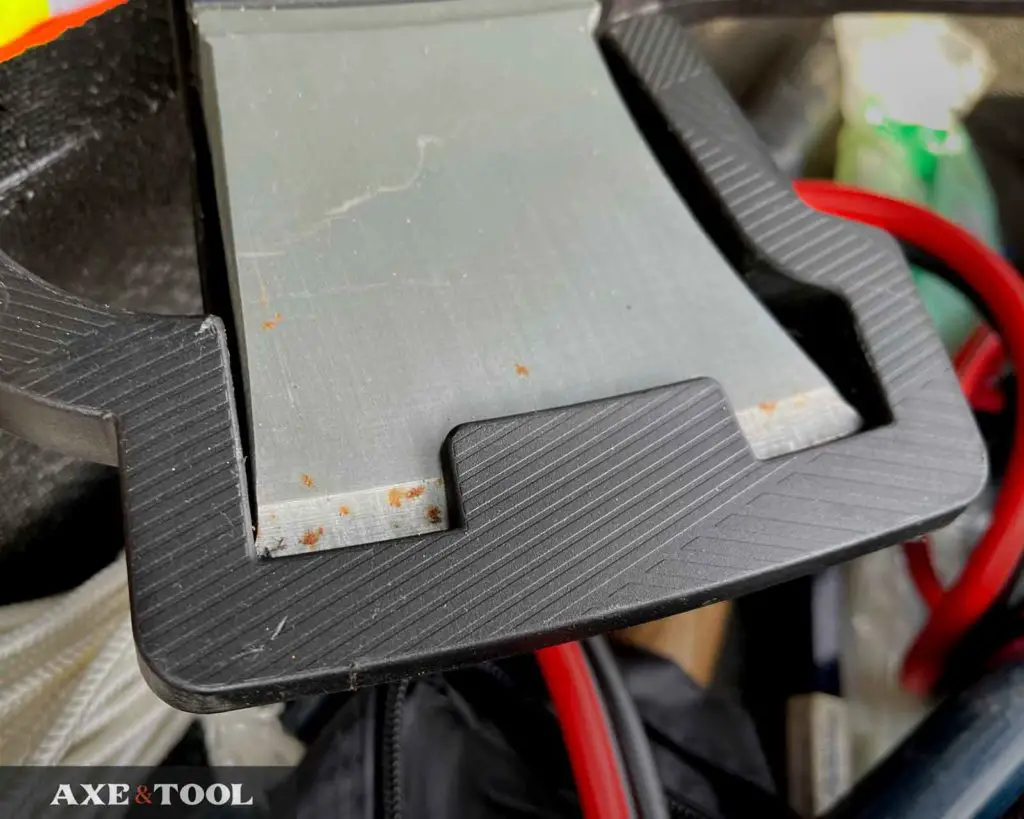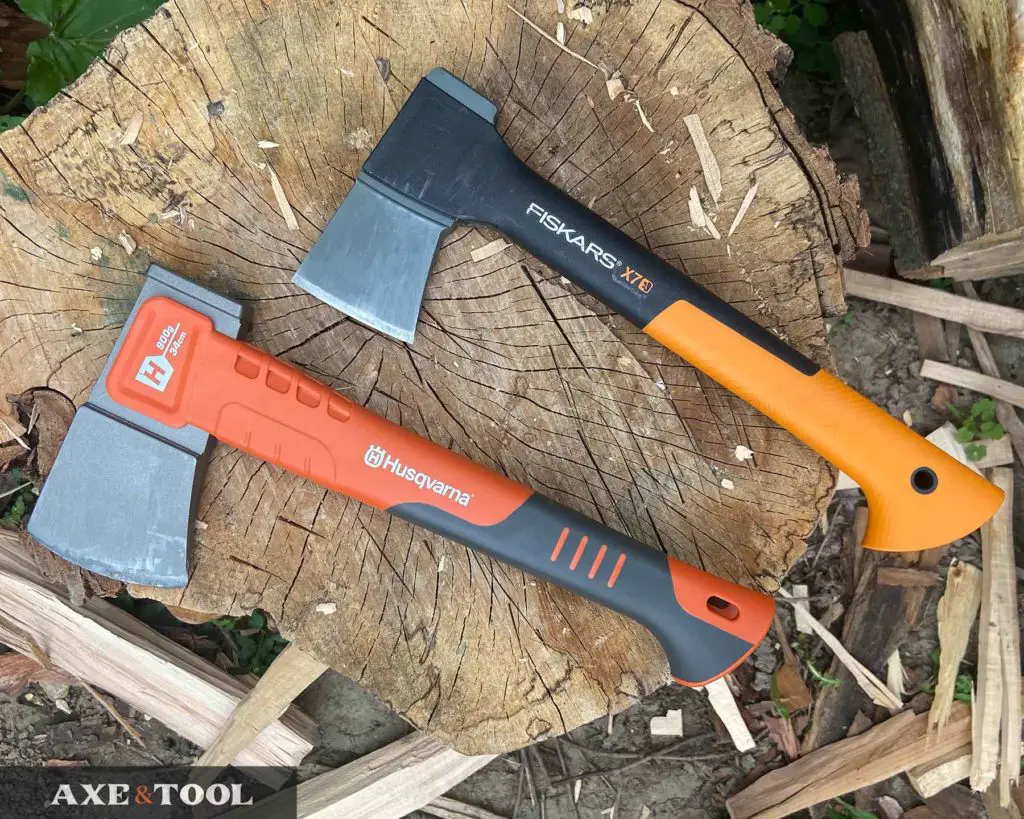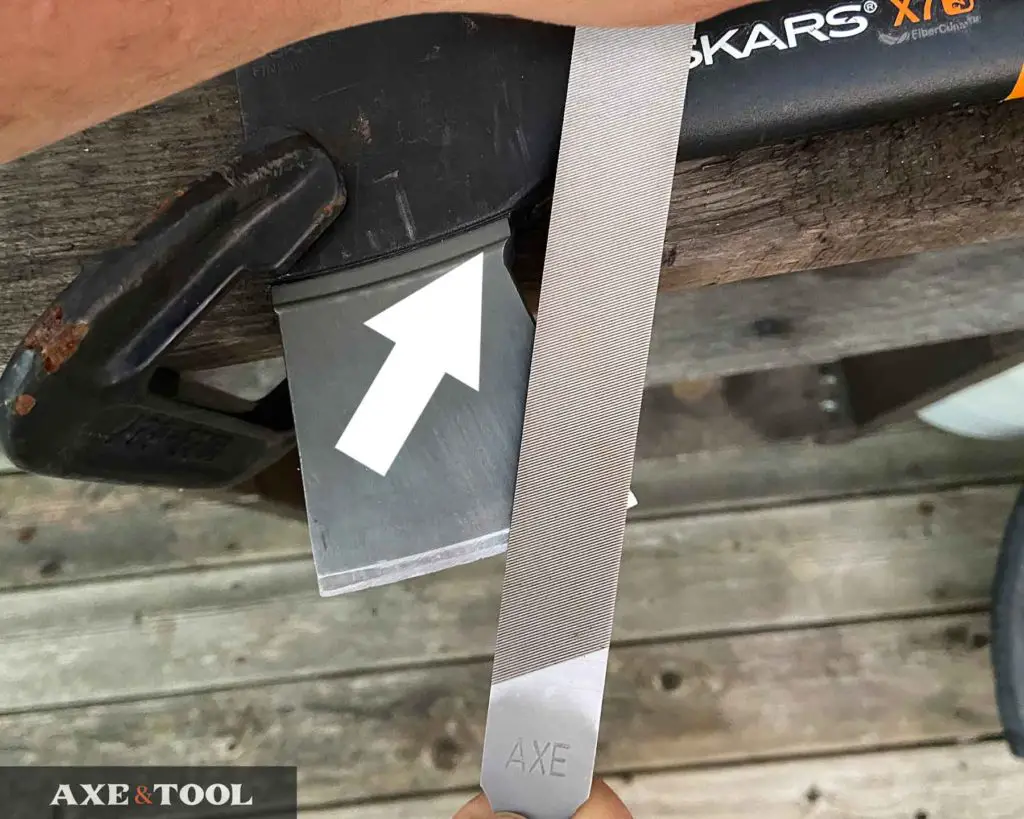Tips for Storing Your Axe in Your Vehicle

I’ve kept an axe in the trunk of my vehicle for years – it can make a lot of sense if you live in a rural area, or travel long distances. They can be great tools to have during emergencies, bad weather, property maintenance, camping, or even just for free firewood opportunities.
But I have learned the hard way that you can’t just buy any axe and throw it in the trunk of your car. So hopefully, you can learn from some of my mistakes.
Is it legal to store an axe in your car?
This is NOT legal advice. I’m not a lawyer and don’t know where you live. Look up your local laws.
I’m in Canada, but I did some research in various regions in the US as well. I found In most of North America, it’s fine to store an axe in your car as a tool that you aren’t intending to use as a weapon.
Often a tool like an axe or knife is only illegal if you show intent to use it as a weapon – even if it’s for self-defense purposes. Or if you are “brandishing” it. So if you have an axe in your trunk with other tools for emergencies (especially if you live in a rural area) it should be fine.
If you are in downtown Manhattan and store a “tactical tomahawk” with a balaclava, leather gloves, and garbage bags – you might have a problem.
Again, I’m not a lawyer – but just don’t be dumb about it.
Can I store an axe in a car?
Only axes with composite or steel handles should be stored long-term in vehicles. Extended exposure to temperature and humidity changes will cause wood handles to loosen with time. The environmental changes can also cause rust – even for an unused axe.
It’s important to pick the right features for your potential use, but also for this kind of storage.
Why wood-handled axes aren’t suited for long-term car storage
Even though your car may seem fairly airtight, temperature and humidity changes will happen with the seasons and even just the time of day.
Wood has fibers that can shrink and expand with environmental changes. When exposed to this for a long period, they can become damaged and dried out. The heat will expand the fibers, crushing those stuck in the head. Then when it’s cold they will shrink and shift. This will loosen the head and weaken the handle.
Storing a wood-handled axe in a car short-term will be fine (days or weeks). And if it’s well oiled it will have resistance to the environmental factors. Just don’t leave it for months on end in your car.
A wood-handled Tomahawk could probably be stored in a car if it is stored with the head separated from the handle. You would likely need to oil the handle annually to keep it from drying out, but with the head off the fibers won’t get damaged by fluctuations.
Composite handles will be unaffected by environmental factors.
Steel handles axes like Estwings can also be used quite well in this role. But I don’t really like steel-handled axes. This is a personal bias, but I find them uncomfortable and don’t want to deal with my handle rusting.
Rust will always be a factor
The temperature and humidity changes will also cause rust on your axe no matter what type. A coated head will do a better job of stopping rust, and they can be found on most composite-handled axes.
But the coatings are not foolproof – especially once the axe has started to be used.
You can see in this picture that even my lightly used Fiskars X15 is starting to get rust spots just from sitting in the trunk.

A versatile axe design is often best for vehicle use
Unless you are using the axe for specific work you’ll probably want a chopping or “general use” axe. Most of the emergency scenarios are going to require you to chop through wood. However, it can be handy on a large property or campsites to be able to split as well.
Don’t forget the sheath
An overlooked detail for storing your axe in the car is making sure you’re using the right kind of sheath. They are incredibly important for safety and avoiding damage to your axe or vehicle, but can also cause specific problems.
Many axes come with a little rubber cover over the blade – don’t leave it on for storage. The rubber will trap moisture against the steel and cause your axe to rust more (I’ve had it happen).
The best is an open and vented plastic sheath solution which will allow condensation and moisture to escape. But a nylon or leather sheath would also be fine.
The best axes for vehicle storage
There are a few good axe brands that I would put in contention, depending on your needs
Fiskars is my first choice for a vehicle axe

Fiskars are good axes and perfect for keeping in a vehicle. They are affordable, fairly indestructible, low maintenance, and come sharp and ready to use.
The Fiskars wedge-shaped head design is quite good at both chopping and splitting greenwood, plus it comes coated for rust resistance (the coating will wear off with use).
The composite handle is very durable, and the sheath is compact and open with vents at the back to avoid moisture being held against the metal.
I have a Fiskars X15 in the trunk of my vehicle year-round. It has a 2.5lb head and 23-inch handle, so it’s large enough to clear a fallen tree or split medium-size logs – but is also compact enough to fit above the spare tire out of sight. Plus the X15 is under $50 US (see on amazon).
You get a decent tool that you won’t feel bad about leaving in the trunk.
Fiskars has an axe for every need
I like the X15, but it can still be too big for some. Fiskars offers a lot of options for most situations.

Smaller axes like the 17” Fiskars X10 (or Gerber Freescape equivalent) would make a great alternative for those who need a more compact option. Its head is tailored slightly more toward chopping, and it can still be used one or two-handed.
Note: The X10 is harder to find, and usually you can only get the Gerber version in the US/Canada (see here on Amazon)
The standard 14” Fiskars X7 hatchet would also make a great compact emergency or camping tool that can fit almost anywhere and be used by almost anyone. And I think it is one of the best value hatchets on the market
If you aren’t sure I have a full article on how to pick a Fiskars axe (there are tons of options).
Husqvarna composite axes are more robust but at a price
Husqvarna offers composite axes that are even more robust than the Fiskars. They have a similar wedge-shaped and coated head but with a unique advantage.
The pole (back of the axe head) is flat and hardened so it can be used as a hammer, or hammered upon. This gives you even more capability while you are out and about. The Fiskars cannot be used this way.
There is both a 13.5″ and 24″ model which would be perfect in this role, as well as a 28″ model – however, there are two trade-offs.

Sharpening is required
These axes don’t come sharp. The grind is uneven, and the coating on the axe dulls the blade until it’s worn off/removed. So you will likely want to sharpen your axe before stowing it away (which isn’t a huge issue).
Higher price point
The bigger issue is the price – Husqvarna composite axes cost almost twice the price of their Fiskars counterpart. So it can be harder to justify spending $80 for an axe or $50 for a hatchet that is going to sit in the trunk (vs Fiskars $45/$25).
See the Husqvarna 13.5″ Hatchet or the 24″ Utility Axe (not the splitting version) on amazon.
But if the price isn’t an issue – they could be a good option.
If this is for construction – just get a beater or a maul
While Fiskars and Husqvarna are very strong axes, they are probably not right for the work truck if they are going to be abused.
You might just want to go with a composite-handled axe from the hardware store. They tend to have thicker blunter edges that can take the abuse, and you won’t feel as bad thrashing on them.
Fiskars axes won’t handle the hammering, and the cutting edge is a little more fragile for things beyond wood. Plus their only big 36″ axe is a dedicated splitter.
But Fiskars does offer an 8lb maul that can double as a sledge hammer – and it can take the abuse. It might be a great choice – see here on amazon. I also have more pic/details about the maul here.
And I probably wouldn’t spend the extra money on the Husqvarna if I knew I was going to treat it really rough. They can take a pounding, but they also don’t have a “full-size option”.
Maintenance for vehicle axes
It’s up to you how much you “care” about these axes. One of the reasons I like the Fiskars is that I don’t have to care if it starts rusting a little – it will still function fine.
If you want, wipe the head down with oil like WD40 every six months, or after use to prevent rust. Otherwise, just leave it and don’t care.
Like any axe, you will need to sharpen it eventually after use – but just do as needed.

Conclusion
Like I said, I keep a Fiskars X15 in my trunk. I didn’t feel I needed to spend the extra money, and I really like how that axe performs in a general-use role. But consider your needs, and your potential uses before choosing.
I was thinking I might chuck the Husqvarna handle in there as a sidekick (because I have it), but you certainly don’t need to buy two.
Please comment below If I missed something or if you have any questions. I do my best to respond to everyone.
About the author:
About the author:
Jim Bell | Site Creator
I’m just a guy who likes axes. I got tired of only finding crap websites, so I set out to build a better one myself.
I’m also on Instagram: @axeandtool

